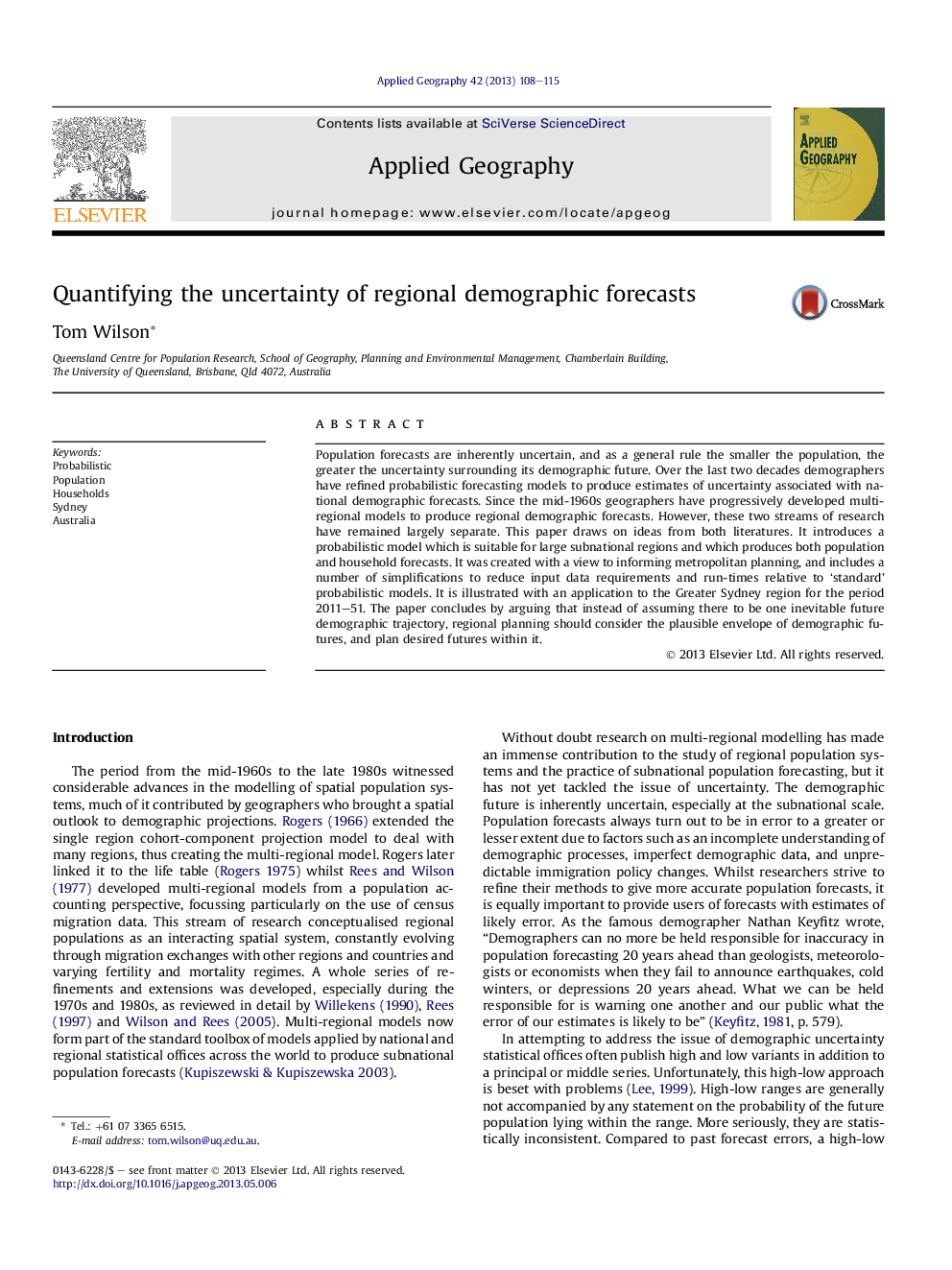| Article ID | Journal | Published Year | Pages | File Type |
|---|---|---|---|---|
| 6538897 | Applied Geography | 2013 | 8 Pages |
Abstract
Population forecasts are inherently uncertain, and as a general rule the smaller the population, the greater the uncertainty surrounding its demographic future. Over the last two decades demographers have refined probabilistic forecasting models to produce estimates of uncertainty associated with national demographic forecasts. Since the mid-1960s geographers have progressively developed multi-regional models to produce regional demographic forecasts. However, these two streams of research have remained largely separate. This paper draws on ideas from both literatures. It introduces a probabilistic model which is suitable for large subnational regions and which produces both population and household forecasts. It was created with a view to informing metropolitan planning, and includes a number of simplifications to reduce input data requirements and run-times relative to 'standard' probabilistic models. It is illustrated with an application to the Greater Sydney region for the period 2011-51. The paper concludes by arguing that instead of assuming there to be one inevitable future demographic trajectory, regional planning should consider the plausible envelope of demographic futures, and plan desired futures within it.
Related Topics
Life Sciences
Agricultural and Biological Sciences
Forestry
Authors
Tom Wilson,
